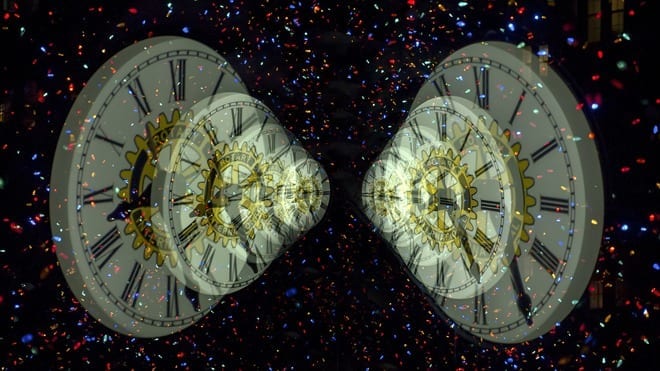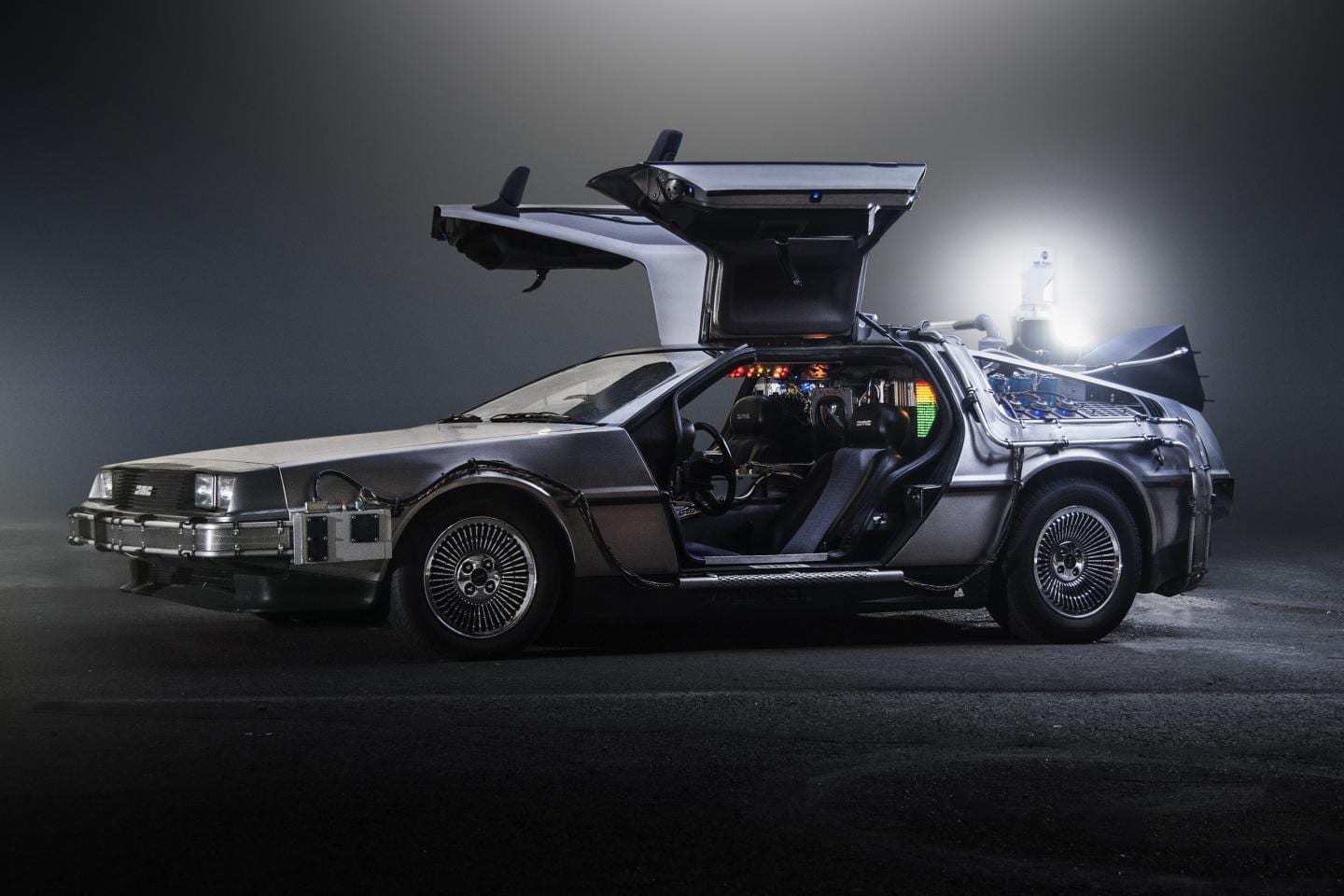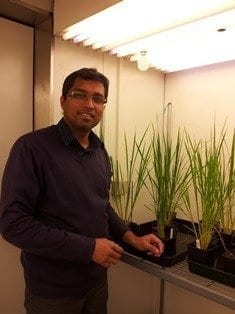
Now researchers suggest a certain kind of time machine could also possess another powerful capability — cloning perfect copies of anything.
Time travel is often a way to change history in science fiction such as “Back to the Future” and “Looper.” Now researchers suggest a certain kind of time machine could also possess another powerful capability — cloning perfect copies of anything.
However, scientists noted the way these findings violate what is currently known about quantum physics might instead mean such time machines are not possible.
We are all time travelers in that we all move forward in time. However, scientists have suggested it might be possible to move back in time by manipulating the fabric of space and time in our cosmos. All mass distorts space-time, causing the experience of gravity, a bit like how a ball sitting on a rubber sheet would make nearby balls on the sheet roll toward it. Physicists have proposed time machines that could bend the fabric of space and time so much that timelines actually turn back on themselves, forming loops technically known as “closed timelike curves.”
by manipulating the fabric of space and time in our cosmos. All mass distorts space-time, causing the experience of gravity, a bit like how a ball sitting on a rubber sheet would make nearby balls on the sheet roll toward it. Physicists have proposed time machines that could bend the fabric of space and time so much that timelines actually turn back on themselves, forming loops technically known as “closed timelike curves.”
These space-time warps can develop because of wormholes — tunnels that can in theory allow travel anywhere in space and time, or even into another universe. Wormholes are allowed by Einstein’s general theory of relativity, although whether they are practically possible is another matter.
A key limitation of this kind of time machine would be that any traveler using it cannot go back to a time before the device was built. It only permits travel from the future back to any point in time after the machine was constructed.
Scientists have for decades explored what closed timelike curves are capable of if they are possible.
One complication they would encounter is the no-cloning theorem in quantum physics, which basically forbids the creation of identical copies of any particle one does not know everything about to begin with.
In classical physics, one can generate a perfect copy of anything by finding out every detail about it and arranging the same components in the same order. However, in the bizarre world of quantum physics — the best description so far of how reality behaves on its most fundamental levels — one cannot perfectly measure every detail of an object at once. This is related to Heisenberg’s uncertainty principle, which notes that one can perfectly measure either the position or the momentum of a particle, but not both with unlimited accuracy.
Nearly 25 years ago, theoretical physicist David Deutsch at the University of Oxford in England suggested closed timelike curves might actually violate the no-cloning theorem , allowing perfect copies to be constructed of anything. Now scientists reveal this might be true in findings
, allowing perfect copies to be constructed of anything. Now scientists reveal this might be true in findings detailed in the Nov. 8 issue of the journalPhysical Review Letters.
detailed in the Nov. 8 issue of the journalPhysical Review Letters.
To understand this research, imagine one builds a time machine in the year 2000. One could place a letter into the device in the year 3000 and pick it up within this box in 2000 or any year between then and 3000. From the perspective of the letter, it goes inside this time machine into one mouth of a wormhole in the future and comes out the other mouth of the wormhole in the past.
However, theoretical physicist Mark Wilde at Louisiana State University, in Baton Rouge, and his colleagues found this scenario may be more complex than previously thought. Instead of the time machine containing just one wormhole, it could possess many wormholes, each at some point in time between the future and the moment of its creation. A letter entering the box in 3000 might exit from a wormhole in 2999, instantaneously go back into that wormhole and emerge in 2998, and so on.
“It’s like there are 1,000 different particles emerging from all the wormholes, but in fact they’re all the same particle you sent in the beginning,” Wilde said. “You just have all these temporary copies emerging from and going back into these wormholes.”
The researchers discovered it was possible to scan the quantum details of whatever is traveling inside a time machine with enough accuracy to create a perfect copy of it.
The Latest on: Time travel
[google_news title=”” keyword=”Time travel” num_posts=”10″ blurb_length=”0″ show_thumb=”left”]
via Google News
The Latest on: Time travel
- 6 NYC Beauty And Wellness Experiences To Get You Ready For Spring Travelon April 30, 2024 at 3:59 pm
It’s finally spring and we’re removing our coats and sweaters to show off some skimpier looks both at home and on upcoming trips. After being cocooned and indoors, we all want to a spring refresh ...
- Time Travel Tuesdayon April 30, 2024 at 2:10 pm
PANAMA CITY, Fla. (WJHG/WECP) -Local historian Bill Hudson joins us for another edition of Time Travel Tuesday! If you’d like to give Bill Hudson a call or recognize any of the people featured this ...
- 40 Travel Instagram Captions Worthy of Your Next Vacay Feed Poston April 30, 2024 at 2:08 pm
Scroll down for 40 bucket list-worthy captions to use for your next glorious trot around the globe—and don’t say I never did anything for you!!! Just here for the giggles. When the trip makes it out ...
- Are Your Flights Going to Take Off on Time This Summer?on April 30, 2024 at 1:59 pm
A record number of travelers will head for the skies this summer, while airlines face Boeing aircraft delays and lingering pandemic problems. Experts predict what this will mean for your summer travel ...
- It's not too late to book summer travel deals, these expert tips make it easieron April 30, 2024 at 12:49 pm
How to book flights in a "goldilocks window" aka the time frame for the best deals for your destination this summer.
- Travel Influencer Reveals Best Moment to Ask for Free Upgradeon April 30, 2024 at 7:15 am
Social media users praised the flight travel tip in a TikTok clip, with one saying it "works most of the time for me." ...
- Why this week is best time to find deals on summer travel hot spotson April 30, 2024 at 12:00 am
The booking time frame is often known as the “Goldilocks window” because the savings are so good for getaways.
- Time travel and surveillance state paranoia collide in a witty, thought-provoking romance novelon April 29, 2024 at 11:11 am
Kaliane Bradley proves imperialism, the scourge of bureaucracy and cross-cultural conflict can be utterly entertaining in 'The Ministry of Time.' ...
- Time Travel to Pompeii at Cincinnati Museum Centeron April 29, 2024 at 2:30 am
A terrifying disaster preserved an ancient civilization—giving us a glimpse of the past and a reminder to live in the moment.
- I quit a comfortable tech job to launch a startup. I had to sacrifice a lot, but now I make $400,000 and travel all the time.on April 29, 2024 at 2:05 am
Gene Caballero had a stable job at Dell, but he quit to cofound a lawn care startup. Now he's earning more, working less, and traveling often.
via Bing News










